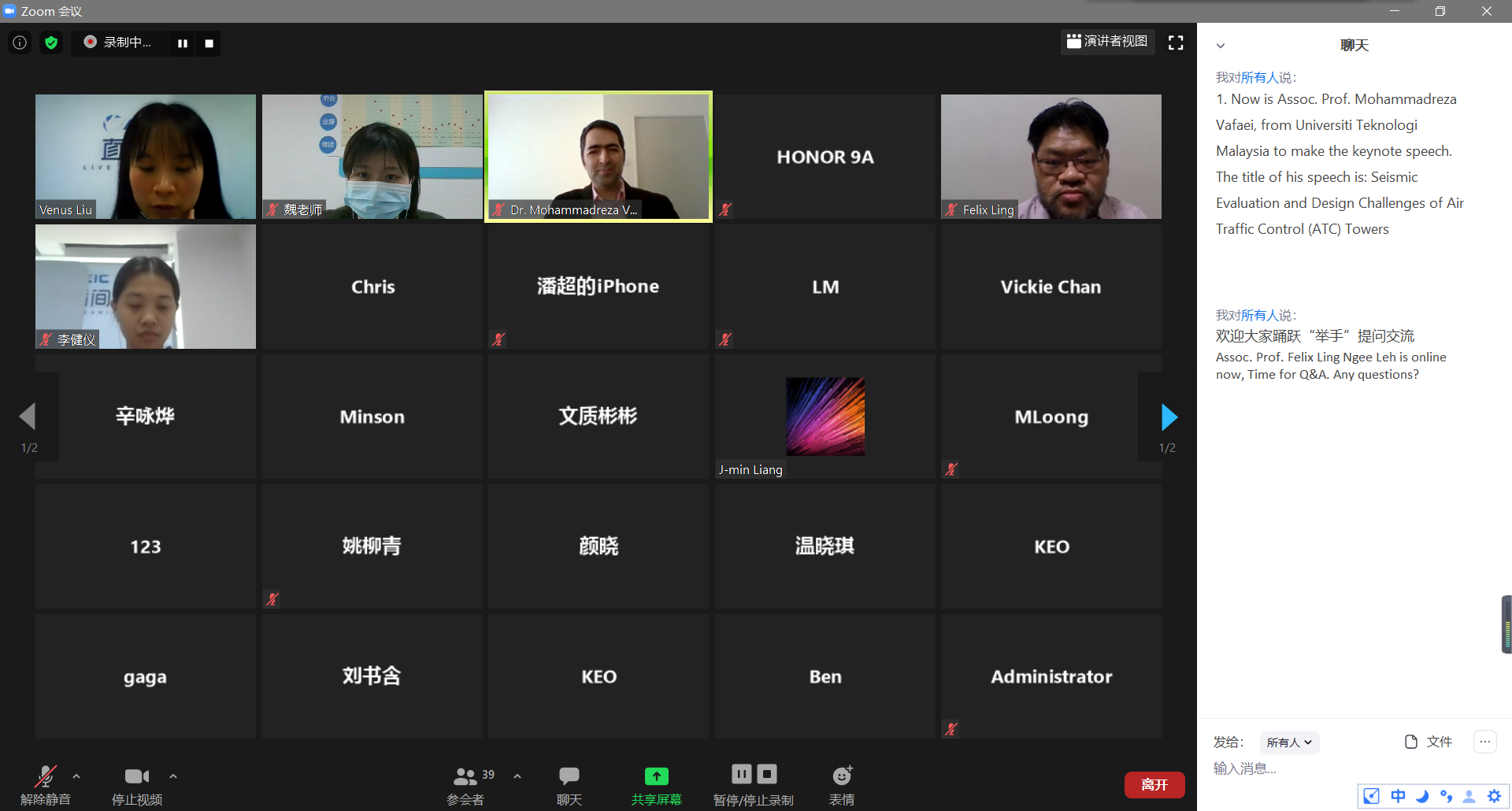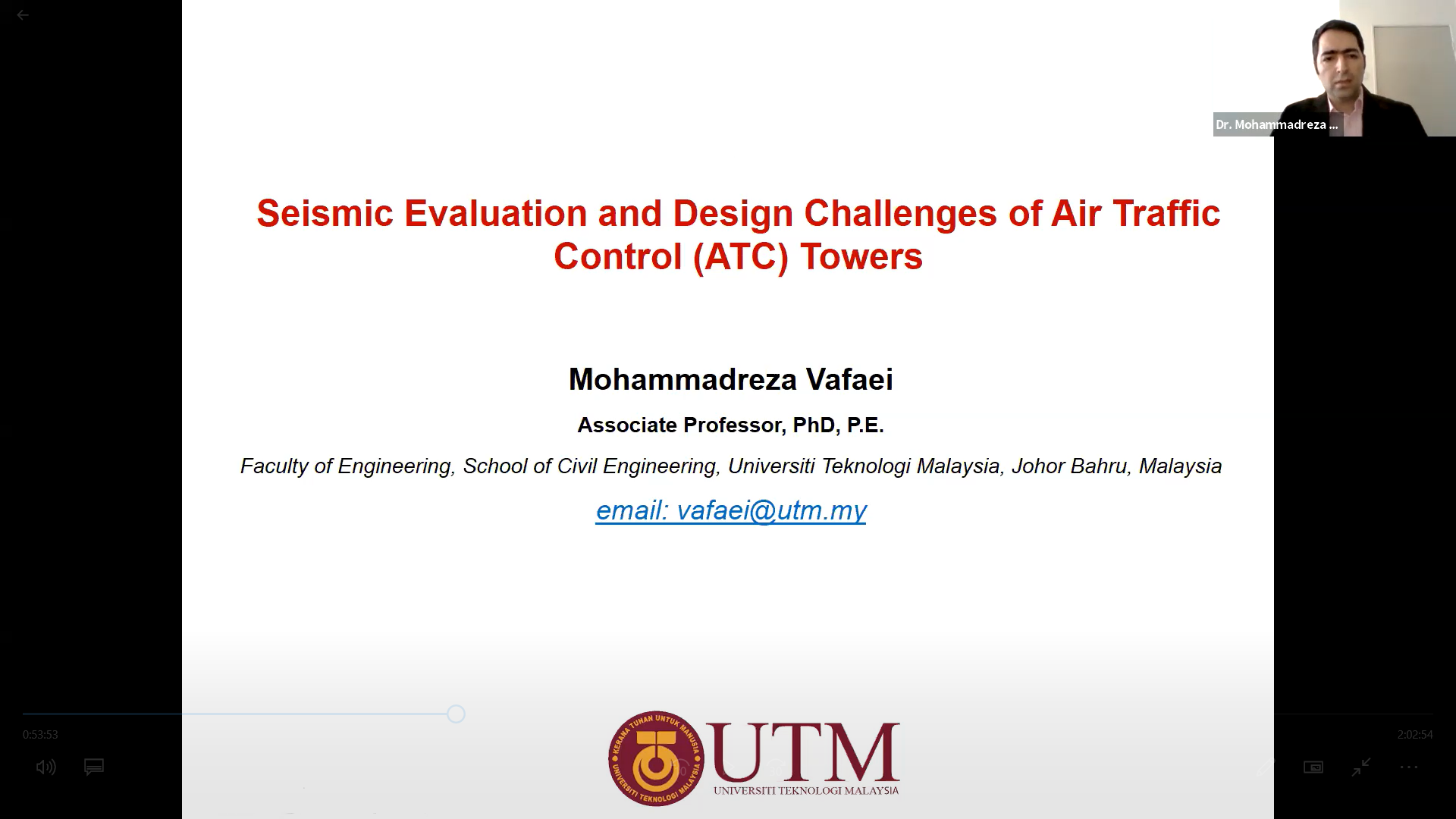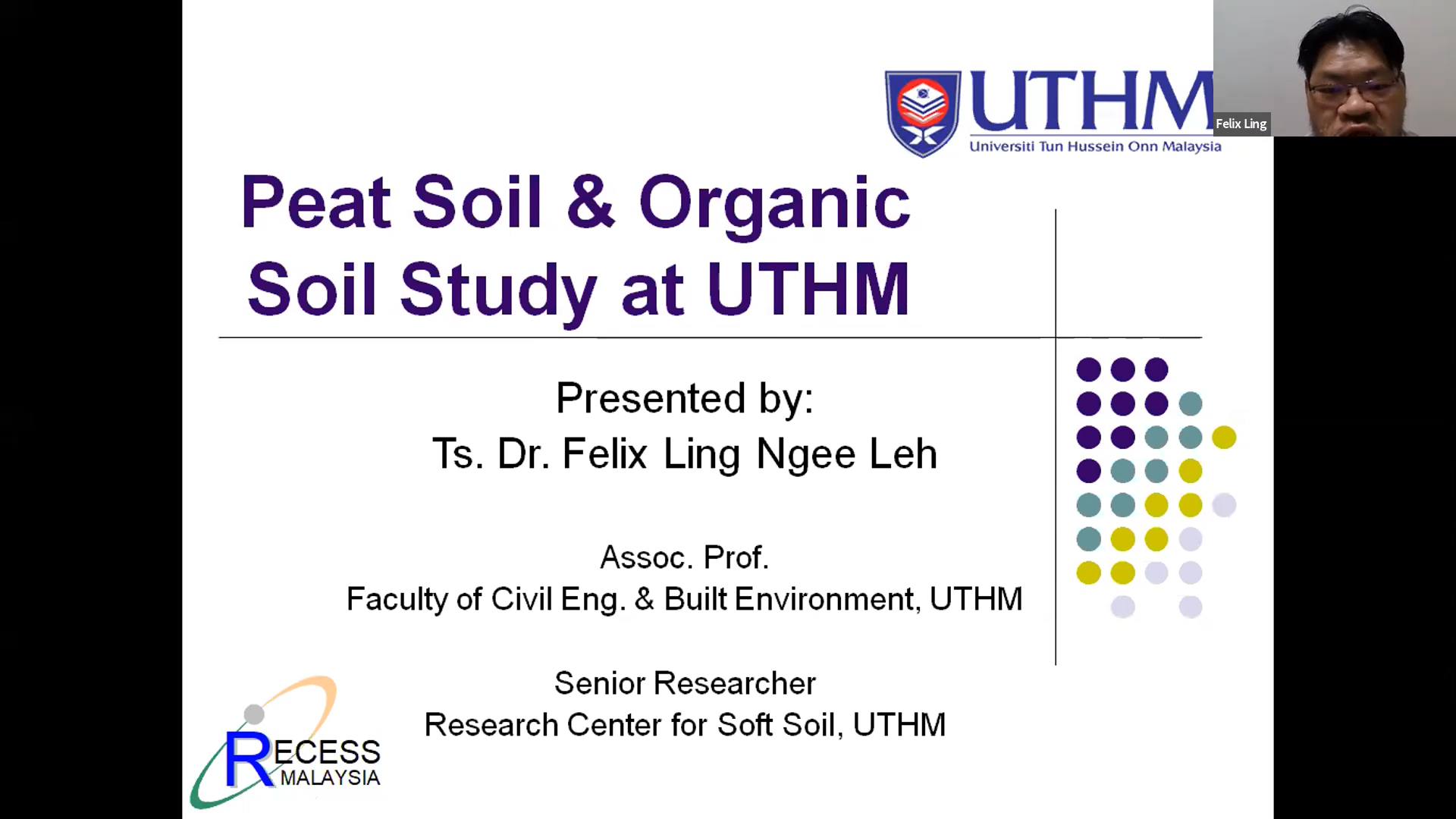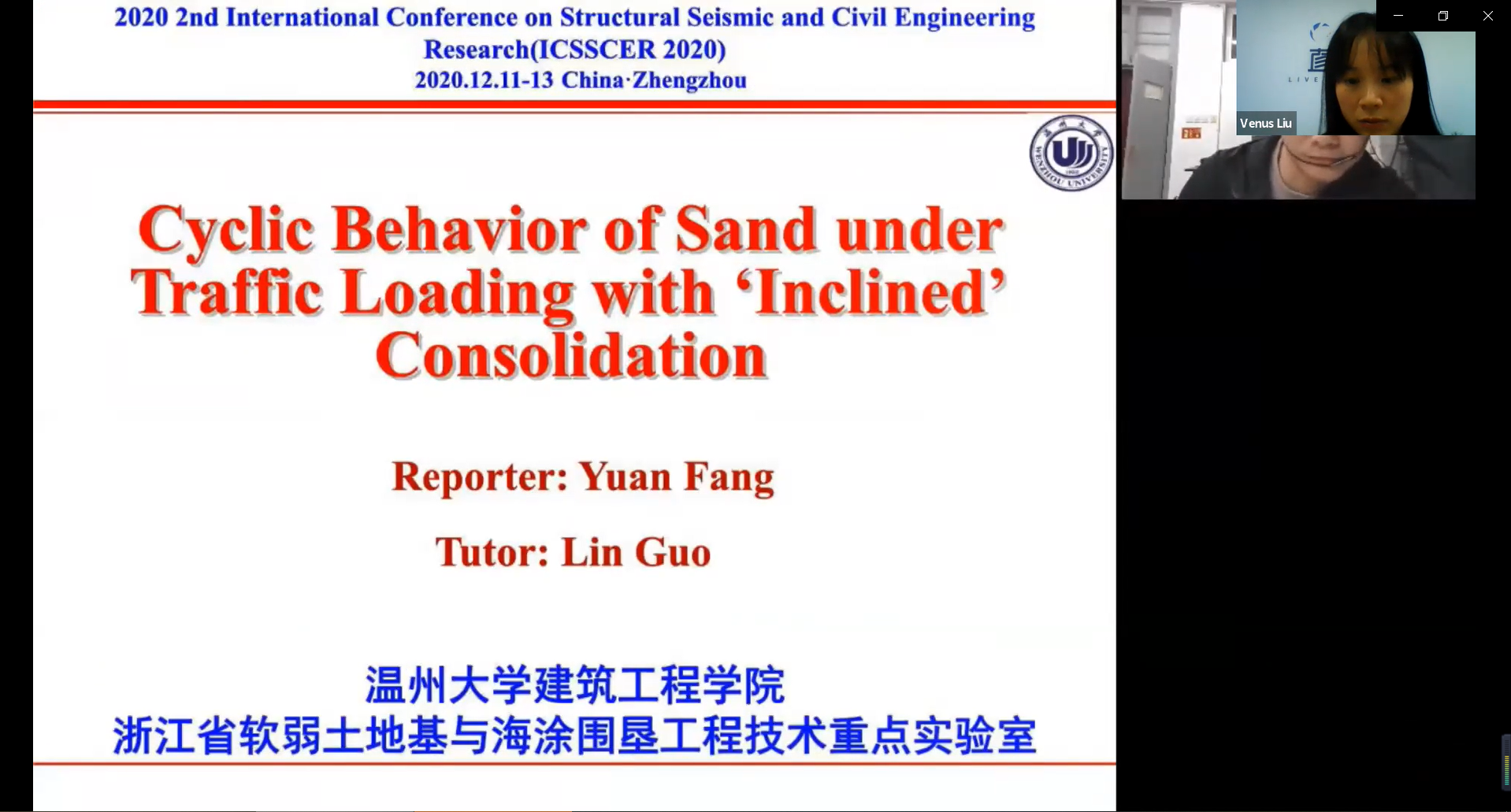ICSSCER 2020 Conference has been successfully held online!
2020 2nd International Conference on Structural Seismic and Civil Engineering Research (ICSSCER 2020) has been held successfully in full virtual style for the 1st time.

This year, considering the COVID-19 pandemic and thus pervasive travel restrictions in the world, many participants were very difficult to attend the conference in the site. So after a careful consideration, ICSSCER 2020 decided to hold it in full virtual style by ZOOM.

Assoc. Prof. MOHAMMADREZA VAFAEI
School of Civil Engineering, Faculty of Engineering, Universiti Teknologi Malaysia
Title: Seismic Evaluation and Design Challenges of Air Traffic Control (ATC) Towers
Abstract: Air Traffic Control (ATC) towers play an essential role in airports' functionality during and soon after strong earthquakes. Therefore, their seismic design and performance are of great importance for structural engineers. However, there is limited information in the literature regarding their seismic performance and design. At first, this presentation provides a review of seismic-induced damage to some ATC towers during past earthquakes. Then, seismic fragility curves of three in-service ATC towers designed and constructed based on an old version of a seismic code will be presented and discussed. Besides, a comparison will be made between their response modification and over-strength factors. This presentation also illustrates the shear force distribution along the height and between the ATC towers' concrete core walls. Finally, the presentation will end with some suggestions for more research on the seismic design of ATC towers.

Assoc. Prof. Felix Ling Ngee Leh
Universiti Tun Hussein Onn Malaysia
Title: Peat Soil and Organic Soil Study at UTHM
Abstract: Malaysia is reported as the ninth largest peat soil land in the world. The largest peat soil deposit in Malaysia is in the state of Sarawak, East Malaysia. Whereas the largest peat soil deposit of peninsular Malaysia is found in Johor, the southern state of peninsular Malaysia. Pontian, Muar and Batu Pahat (home of Universiti Tun Hussein Onn Malaysia) are some of the districts that rich in peat soil. Hence, it is significantly in need of UTHM to focus on the study of peat soil and organic soil as part of the social responsibility to the community. Peat soil is defined as the soil with high organic content that will significantly influence the soil properties. Peat soil is categorized as problematic soil as the soil is low in shear strength, and experience excessive settlement over a long period after loaded. Besides that, the presence of organic matter in the peat soil also has the potential to disrupt the soil stabilization process that normally used to strengthen the soil. Thus, the studies of peat soil and organic soil at UTHM are focused on the investigation of its physical, chemical, microstructural characteristics, the potential use of different stabilization materials in strengthen it and also the use of artificial organic soil. Artificial organic soil is used to control the inconsistency of test result which may obtain due to the complexity of soil characteristic of natural organic soils. The research works are not only limited in laboratory scale, some pilot-scale field studies were also carried out at few test sites around UTHM. All the research works on peat soil and organic soil study are facilitated by Research Center for Soft Soils (one of the excellent centre of UTHM) and some other research collaborators such as Public Works of Malaysia (JKR), University College of Technology Sarawak (UCTS) etc.

Yuanfang
Wenzhou University
Title: Cyclic Behavior of Sand under Traffic Loading with ‘Inclined’ Consolidation
Abstract:To investigate the vertical strain development of sand under traffic loading after the process of ‘inclined’ consolidation, a series of cyclic drained tests were carried out by using a hollow cylinder apparatus. Three parameters were considered in this research: initial consolidation angle (α0), vertical cyclic stress ratio (VCSR) and cyclic torsional stress ratio (η). Test results show that the vertical strain under traffic loading path is larger than that of specimens whose cyclic torsional stress ratio is equal to 0 in the same situation. Furthermore, the vertical stain will decrease with the increase of consolidating inclination in the situation of same values of vertical cyclic stress ratio and cyclic torsional stress ratio. When initial consolidation angle is equal to 0ο and 22.5ο, the vertical strain will increase with increasing value of cyclic torsional stress ratio, while the effect of cyclic torsional stress ratio on vertical strain will be less significant when initial consolidation angle is equal to 45ο. Moreover the trend that vertical strain increases with increasing value of cyclic torsional stress ratio will be more significant for a larger value of vertical cyclic stress ratio.
Meanwhile, in order to provide more communication time among participants from different time zone, a online forum were strarted in the conference period.
